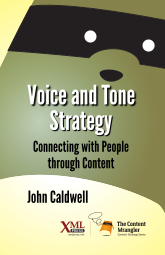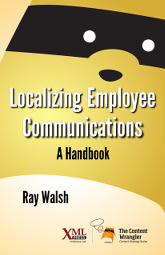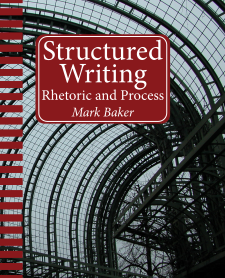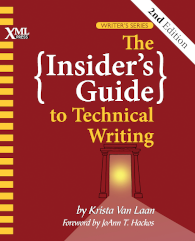This is a lightly edited reprint of an article originally published by The Society for Technical Communication (STC). The original can be found at STC Notebook.
As a publisher, we receive a fair number of book proposals, and frankly, most of them are pretty bad. They range from proposals for books that are clearly outside our niche to proposals that look like they were dashed off during a lunch break. Almost all, even proposals for books that we have accepted, miss the most important point about writing a book proposal. A book proposal is a sales document. It is in essence a résumé for the book.
If you’re writing a sales document for a publisher, the number one selling point needs to be that your book is likely to sell a lot of copies. There are other reasons for publishing; for example, O’Reilly published DocBook 5: The Definitive Guide, even though it was unlikely to sell in large numbers, because they use DocBook, they had published the first edition, and they didn’t want to give up the second edition. However, that’s rare. Publisher want best sellers, and the best way to get your book published is to convince a publisher (or an agent) that your book will be a best seller in its category.
Structure of a proposal
A non-fiction book proposal needs to answer the following questions:
-
What is the book about?
-
Who is the book for?
-
What is the structure of this book?
-
Why are you the right person to write this book?
-
What is the competition?
-
When will the book be ready?
-
How good a writer are you?
I suggest using the structure of your proposal to answer these questions one by one. Here is a sample structure that does just that.
Overview
Here is where you describe what your book is about. It can be anywhere from a couple of paragraphs to a page. The objective here is to capture the reader’s attention, so it’s fine to open with a story, either one that explains why you want to write the book or one that illustrates the main point of the book. As with a résumé, the objective is to avoid a quick rejection; you want the publisher to stay interested enough to read the entire proposal.
Audience
Who is this book for, and what pre-requisite knowledge do you expect the audience to bring? In addition, it’s a real plus to estimate how large the potential audience is. Publishers like to know that there are a lot of people who might buy the book, and they also will appreciate the effort you took to quantify the potential audience.
Outline
This section continues to answer the question about what the book is about. I prefer to see an annotated table of contents, filled out to at least first-level headings. The reason is that the biggest problem I find as a book editor is structure. With many books, the chapter structure is fine and the writing is good, but when I dig into a chapter, the structure falls apart. Long form narrative needs a structure that leads the reader through the book and builds to important points. While there are some books that don’t require this (our recent book, The Language of Content Strategy, which is a reference book, is an example), most do.
My theory is that this problem is a result of the emphasis on topic-based writing in technical communication. That is, technical writers, who form the bulk of our authors, are expected to build self-contained, concise, procedural topics. For technical writing, that’s exactly what’s needed, but for a book that builds a narrative, it’s not enough. The result is books that are well written at the sentence, paragraph, and even section level and have a logical sequence of chapters, but then fall apart in between. An annotated TOC will show whether you are able to handle long form narrative structure.
About the author
Here is where you sell yourself. Publishers know that the author is the biggest variable in determining sales volume. Some of that is the author’s knowledge and skill as a writer and in the subject area, so you certainly need to emphasize those points. However, just as important is the author’s standing in the community that is interested in the book. I have found that our best-selling books almost always have an author who is active in his or her area of expertise and acknowledged as an expert.
It’s also helpful to highlight ways in which you would market the book. For example, if you are very active on a mailing list or have a blog that gets a lot of traffic, make sure you include that information.
Competition
Here is where you describe what books or other resources might be considered competition. It’s also where you describe why your book is better written, more up to date, more specific, or otherwise more likely to sell more copies than the competition. Not only does this help the publisher understand the competitive environment, it also shows how much you know about other books in the market. You can be sure the publisher will go to Amazon and search using some relevant keywords. If you’ve neglected to mention an important reference, your stock will go down.
Schedule
This doesn’t need to be a detailed schedule, but you should provide some idea of how much you have already completed, when you think you’ll be able to finish the book, and any other relevant information related to schedule and planning.
Writing sample
Ideally, this should be one or two chapters from the book itself. You can instead use a sample from some other work if you don’t have any chapters written, yet. However, not having any of the book written is a warning flag to publishers. We like to see that you’ve gotten a start.
Summary
All of this may seem like a lot, but you’ll be spending months writing the book, so why not spend some time up front writing a proposal that will help sell it? And, as an additional benefit, a good proposal will help you as an author. For example, you may discover that the book you want to write has already been written, or that if you broaden the focus a bit, you will have a much broader audience. And that outlining exercise is sure to help you build a better structure. Finally, take a little time and search for “non-fiction book proposal” in your favorite search engine. You will find lots of useful resources.
About the Author
Richard L. Hamilton is the founder of XML Press, which is dedicated to producing high quality, practical publications for technical communicators, managers, content strategists, and marketers and the engineers who support their work. Richard is the author of Managing Writers: A Real-World Guide to Managing Technical Documentation, and editor of the 2nd edition of Norm Walsh’s DocBook: The Definitive Guide, published in collaboration with O’Reilly Media.




